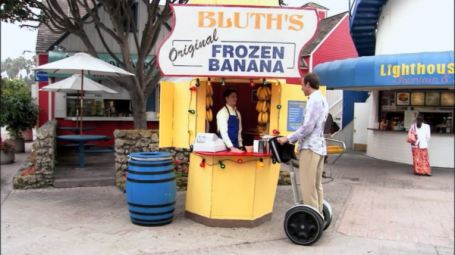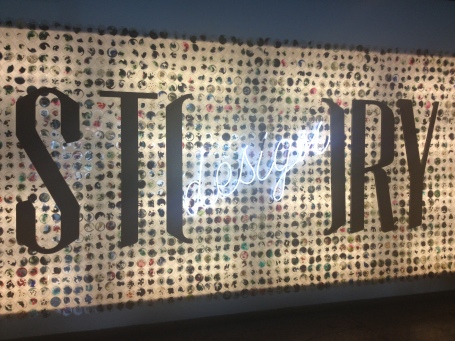Becoming the next iteration.
Well, folks. It’s been a great 3+ years. From the day that I started this blog (and started documenting my exploration of what kind of designer I wanted to be), I’ve been inspired and challenged and driven to learn. And now it’s time to kick off the next iteration of what I want to be; it’ll be a little bit of design, a little bit of enterprise, and (partly because of this blog) a little bit of writing.
Stay tuned on the next chapter by visiting giselagarrett.com or following @giselataylor
All the best,
Gisela
Taking collaboration in successful stride.
In building brand awareness and reaching a larger target market, collaborations have historically proved to be a successful tool and marketing strategy. One of the product categories to best utilize and execute collaborations has been footwear, particularly athletic shoes. Athletic shoes historically have been seen as a utilitarian object – used primarily for exercise, or daily casual wear. That is until they started marketing themselves as collectible pieces, similar to Carrie Bradshaw’s iconic Manolo Blahnik collection on Sex and the City.
Sneaker collecting became a mainstream trend when Nike and Michael Jordan introduced Air Jordans in 1985. Since then, most sneaker brands have experimented with various collaborations but there are three brands in particular that have been most successful in utilizing their collaboration to reach a completely new audience – Puma, Converse and Reebok.
Puma first partnered with the highly conceptual fashion designer and filmmaker Hussein Chalayan in 2008 by becoming a majority stakeholder of his business and appointing him as their Creative Director. Since then, they’ve launched Puma Black Label and have partnered with various other high profile fashion designers such as the late Alexander McQueen. The partnership with Hussein Chalayan is particularly successful in that he is able to blend his own conceptual and innovative design thinking with Puma’s sleek, minimalistic style and experiment in different materials and shapes that are non-traditional for athletic wear. This brings a more fashion-conscious and trend-oriented consumer to Puma and gives Chalayan a new ready-to-wear market to grow his own brand recognition.
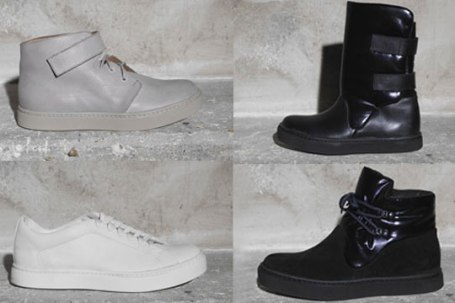
image via
Converse has also been incredibly innovative in their collaboration partners, particularly with embracing the materiality of their shoes (they are canvas based unlike the leather or man-made materials of their competitors). They brilliantly partnered with textile and pattern experts Marimekko and Missoni. Finnish based design brand Marimekko is particularly famous for printing on rough textured fabric and bringing this very basic material into a high fashion context, which is exactly what they did for Converse. The collaboration between Converse and Marimekko combines both an iconic American brand with an iconic European brand, therefore expanding both to a global audience and it brings together high fashion, basic materials and functionality in a beautiful new product.
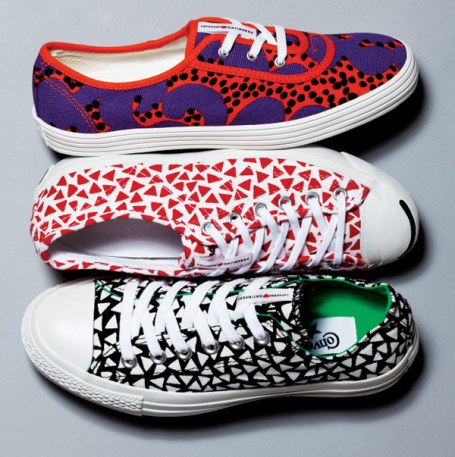
image via
Reebok just launched their collaboration with the Keith Haring Foundation, a project I was personally involved with. Reebok has been collaborated in the past with iconic artists like Jean-Michel Basquiat and Ryan McGinness and this collection is a natural expansion and a very strategic way for them to embrace the history of the company. Reebok’s brand awareness and popularity peaked in the 1980’s and by working with an iconic artist from that period they are able to build off their impact during that era while using contemporary manufacturing methods to create shoes that really push the boundaries of both art and sneakers by having removable pieces and 3D elements. These shoes are truly collector’s pieces that are must-haves for both the art community and sneaker collectors.
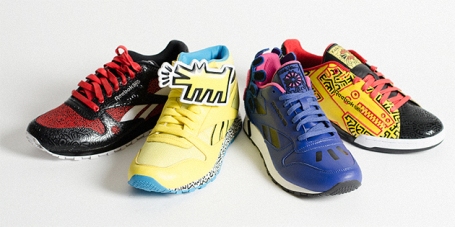
image via
Footwear companies have really figured out how to do collaborations successfully for both brands involved. Other product categories are starting to experiment with collaborations as a marketing tool and some are doing so more successfully than others. It will be interesting to see moving forward how this strategy affects long term brand building and awareness, and how it can help brands expand their global reach.
Iconic architecture meets iconic television.
We’ve highlighted the potential for crossover between television and architecture before, but we’re just that much more psyched to share this recent compilation with you. The seeming Buzzfeed of our industry, Architizer, has compiled a list of Ducks (in the words of Denise Scott Brown, Robert Venturi, and Steven Izenour) in honor of the revival of Arrested Development and their “very favorite (if fictional) architectural duck,” Bluth’s Frozen Banana Stand.
Happy streaming this weekend, folks!
STORY: Dramatically remodeling retail.
“A Startup Store has the point of view of a magazine, but it changes like a gallery and it sells things like a store” – Rachel Shechtman, Founder of STORY.
This week, as part of the OpenCo conference that allows anyone from investors, marketers, job seekers, and curious neighbors to attend sessions at some of the most innovative companies in New York City, I was able to visit STORY. The store, located on 10th Avenue, right next to the High Line, is a retail space that changes all of its merchandise, design, fixtures and products around a different story-based theme every four to six weeks.
 This month’s story was all about design. Designer Anna Karlin used the STORY space and storefront as her medium to explore the different aspects of design and to start a conversation on what is design. The store featured everything from gold Pantone iPhone cases to an on-site Barista Bot, courtesy of GE, that presents visitors with a free cup of illycaffè, complete with laser etching on the foam.
This month’s story was all about design. Designer Anna Karlin used the STORY space and storefront as her medium to explore the different aspects of design and to start a conversation on what is design. The store featured everything from gold Pantone iPhone cases to an on-site Barista Bot, courtesy of GE, that presents visitors with a free cup of illycaffè, complete with laser etching on the foam.
What makes STORY so innovative is that is approaching retail and merchandising in an entirely new way – combining message, marketing and products in one curated collection that never gets stale due to its changing nature. Wired Magazine included STORY in its discussion of elastic environments and how space can be better utilized and presented for the consumer that is tired of the standard warehouse store layout.
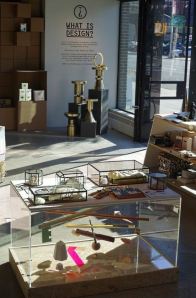 One of the biggest business problems with a model like this is that the store has to shut down for 4-10 days every month. This means nothing gets sold during that time, which for a store in Manhattan, could be a death sentence. Rachel Shechtman decided that to work around this, she would not make the store entirely dependent on profits from the products themselves. Instead, she also partners with various corporations that fit each month’s theme as sponsors (similar to way that magazines have editorials – the products, and ads – the sponsors). The sponsorships always make sense with the story that she is telling. For the story on color, Rachel worked with Benjamin Moore Paint, who were also able to bring their expertise on color into the conversation.
One of the biggest business problems with a model like this is that the store has to shut down for 4-10 days every month. This means nothing gets sold during that time, which for a store in Manhattan, could be a death sentence. Rachel Shechtman decided that to work around this, she would not make the store entirely dependent on profits from the products themselves. Instead, she also partners with various corporations that fit each month’s theme as sponsors (similar to way that magazines have editorials – the products, and ads – the sponsors). The sponsorships always make sense with the story that she is telling. For the story on color, Rachel worked with Benjamin Moore Paint, who were also able to bring their expertise on color into the conversation.
Another key component of STORY is actually starting discussions among its community about the current theme. STORY hosts events almost every week featuring speakers, product launches and workshops that anyone can attend. The goal is to start a dialogue around these themes and make shopping or exploring new products a collaborative and inclusive process, not simply a task to cross off your to do list.
As people have less time, they want more from their experiences. STORY is experimenting with different ways of bringing the most rewarding experiences to their customers. While doing so, they are becoming not just a destination but a resource for their visitors – to learn new skills, engage with new people and things and to come together in a collaborative and inquisitive shopping experience. I think other retailers are going to start catching on and incorporating this model into a more traditional store environment, which will make the process of shopping more rewarding on a larger scale.
Design Week: ICFF Alternatives
While ICFF may be the place to be, in some ways, don’t forget the alternatives that exist out there! (Thanks, Cool Hunting, for the inspiration.)

image via
My personal favorite is probably Wanted Design, but the grand umbrella of NYCxDESIGN has plenty more ideas for you as well. Let us know your favorites in the comments!
Spectacular, conceptual, or overconfident?
Russia’s Pavilion at the 2012 Venice Biennale is perhaps another example of Russia’s love for over-the-top design and presentation, but it is also just genuinely AWESOME.

image via designboom
The pavilion is split into two completely separated sections; you have to walk out of the pavilion and enter through another doorway to access the other part. The top section has every surface covered with QR codes that, when read through the Samsung tablets provided, feature different design submissions for the new business and technology city of Skolkovo, located right outside of Moscow. The Skolkovo project, or i-City, is a fairly controversial new initiative to encourage new business opportunities and investment in Russia through an “open” city with an investor-friendly tax structure. However, funding and support for the project has mostly been from the government with little foreign funding as of yet, resulting in an unclear forecast of how successful the project is going to be. i-City is scheduled to open in 2017 with a university, housing, and space for over 500 companies to work in various science and technology fields.

image via designboom
The bottom section, which in some ways is even cooler than the top section, features tiny backlit images of the Soviet Union’s many secret science-related cities of the past. The room is entirely dark except for these small images, creating a very intimate setting for the viewers of these rarely seen photos of cities from all over the Soviet Union, many of which don’t exist anymore.

image via designboom
Both sections of the Biennale exhibition were curated by Sergei Tchoban and Sergey Kuznetsov of SPEECH Tchoban & Kuznetsov, who are also masterplanning the Skolkovo project. The architectural team they’ve chosen for the project includes Pierre de Meuron, Rem Koolhaas, Kazuyo Sejima, and the Venice Architecture Biennale’s director David Chipperfield, plus the future winners of several rounds of competitions that will be held as the project progresses.

image via designboom
Overall, Russia’s Pavilion is pretty amazing (although it did not win first place), but I wonder how much of it “show-factor” and how much of it is really high quality design? And while I didn’t get to see it in person, which might disqualify me from weighing in, I did get a full run-down from someone who got to experience it live. My take is that it’s both: a really spectacular presentation but also an exploration of some incredible concepts.
September 12′s daily design idea is also the big question that remains: how successful will the very top-down economic initiative of the Skolkovo project be for Russia, particularly now that it has been juxtaposed so publicly with many of the region’s lost cities?
4 predictions for the future of design practice.
In April, I attended an event at the Center for Architecture called RE:Think | Design Thinking Outputs that was focused on models for dynamic and collaborative practice within the design (and larger problem solving) industry. It’s one of the best professional panels I’ve ever been to content-wise, and the format was also especially interesting; presenters were paired up and then engaged in dialogues after their paired presentations.
If you have the time, a video of the event is available: http://vimeo.com/41152962 But if you don’t, below are my four big takeaways/predictions.
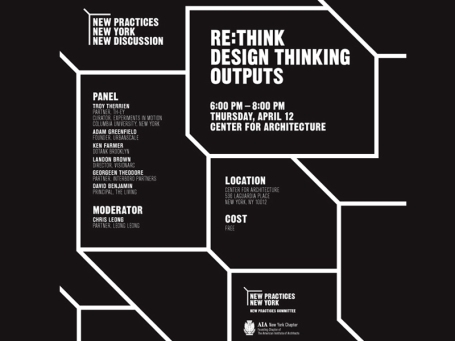
image via VisionArc
1. Project teams will increasingly be formed based on shared values, rather than coordinated skill sets or specific project goals. To be successful in these teams, we’ll all need to get better at articulating and demonstrating our most important values.
2. Projects will become increasingly iterative, and decreasingly organized around predetermined deliverables. Everyone will need to get better at embracing risk, learning quickly, communicating clearly, and generally being adaptable.
3. The term “client” will include an increasingly diverse array of stakeholders, funders, and both participating and non-participating beneficiaries. As designers, we have the opportunity to take a proactive stance in prioritizing all these clients. It would be wise for us to do so.
4. Authorship will increasingly be preserved thanks to respect from our peers, rather than by taking defensive legal action. As the processes of creating ideas, images, products, and systems become increasingly collaborative, the myth of the lone creative will continue to be debunked. We will have to get more comfortable in trusting others to give credit where credit is due, since strict copyrights will become increasingly impractical.
This event was organized by AIANY’s New Practice Committee.
May 30’s daily design idea is what predictions do you have about the future of design practice?
